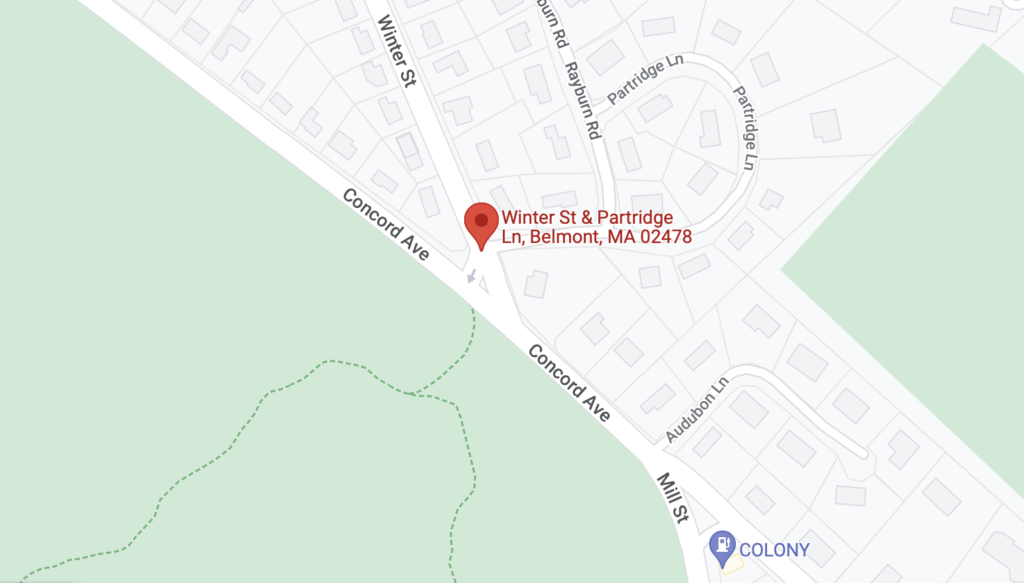Photo: Belmont’s new Town Planner, Chris Ryan
While not as thrilling (or funny) as “Succession,” the Netflix series that detailed a family fight for control of a global media and entertainment conglomerate, a major change in the structure of an important town department has as much to do with
At its Monday, Sept. 18, meeting, Belmont Select Board heard Town Engineer Glen Clancy detail the recent reorganization of the Office of Community Development as it transforms into the newly-formed Office of Planning and Building (OPB) and an Engineering Division has been created within the Department of Public Works.
A major part of the reorganization is hiring Christopher Ryan, a 30-year veteran of municipal planning, as the OPB’s first director and Belmont’s new town planner. The reorganization was effective on Sept. 5, Ryan’s first day on the job.
Clancy will continue as town engineer within the DPW while his assistant, Ara Yogurtian, will hold onto his post as Inspector of Buildings while being liasion to the Planning Board and the Zoning Board of Appeals.
The changes will allow the town to prepare for some “big” retirements in the near future, according to Town Administrator Patrice Garvin. While Clancy said he and Yogurtian “are not going anywhere, anytime soon,” the changes prevent the town from being “caught short” with sudden departures and leave the town scrambling to find experienced replacements.
“Succession planning is two-fold,” said Garvin. “It’s really to get people into to learn a lot from the people that are already here, and that will be moving on eventually.”
Speaking to the Board, Clancy said the reorganization was prompted by “vacancies across the spectrum” of the OCD – including the critical town planner position – that were nearly impossible to fill in the current low unemployment job environment. As a result of the unfilled openings, he and Yogurtian were saddled with multiple tasks.
Including being town engineer, Clancy was director of the Office of Community Development, inspector of buildings, and zoning enforcement officer while Yogurtian was juggling the assistant director post, field engineering, inspecting buildings and street work, board work, and supervising the local building inspector.
“It was getting too difficult to cover all the bases effectively and efficiently, so that’s another reason why it was time to do this,” said Clancy.
Select Board Vice Chair Elizabeth Dionne reiterated Monday that important departments have been woefully understaffed for years, noting the Planning Department will be integral in the planned revamping of the town’s zoning bylaws.
“I looked at those two positions and said, ‘How are we going to fill these two positions should they become vacant?'” said Clancy. “And I didn’t have a good answer.”
With no in-house personnel with the skill set ready to step into either his or Yogurtain’s positions, Clancy and Garvin created a succession plan by “reconstituting the Office of Community Development into something that was sensible and recognizable to the public.”
The first step was combining the planning and building functions under one roof “as they made sense together,” said Clancy. He said that making the hard-to-hire town planner post as the new department director made the position more attractive in the job market, as Ryan was soon hired for the critical post.
“The proof is in the pudding, the fact that we were not able to fill this position of the town planner and then finally (after the restructuring) to find someone who is highly capable of the position,” said Clancy.
Engineering functions would be housed with the DPW, which most communities have it located.
As critical as having an efficient departmental structure, there will be opportunities to mentor employees and new hires for future positions. The new Engineering Department will hire a resident engineer, “an immediate need,” who will be overseeing permitting, evacuation, and pavement restoration, as well as becoming the town’s stormwater coordinator.
“This is someone who could act as my assistant and maybe even be a successor as the town engineer down the road,” said Clancy.
